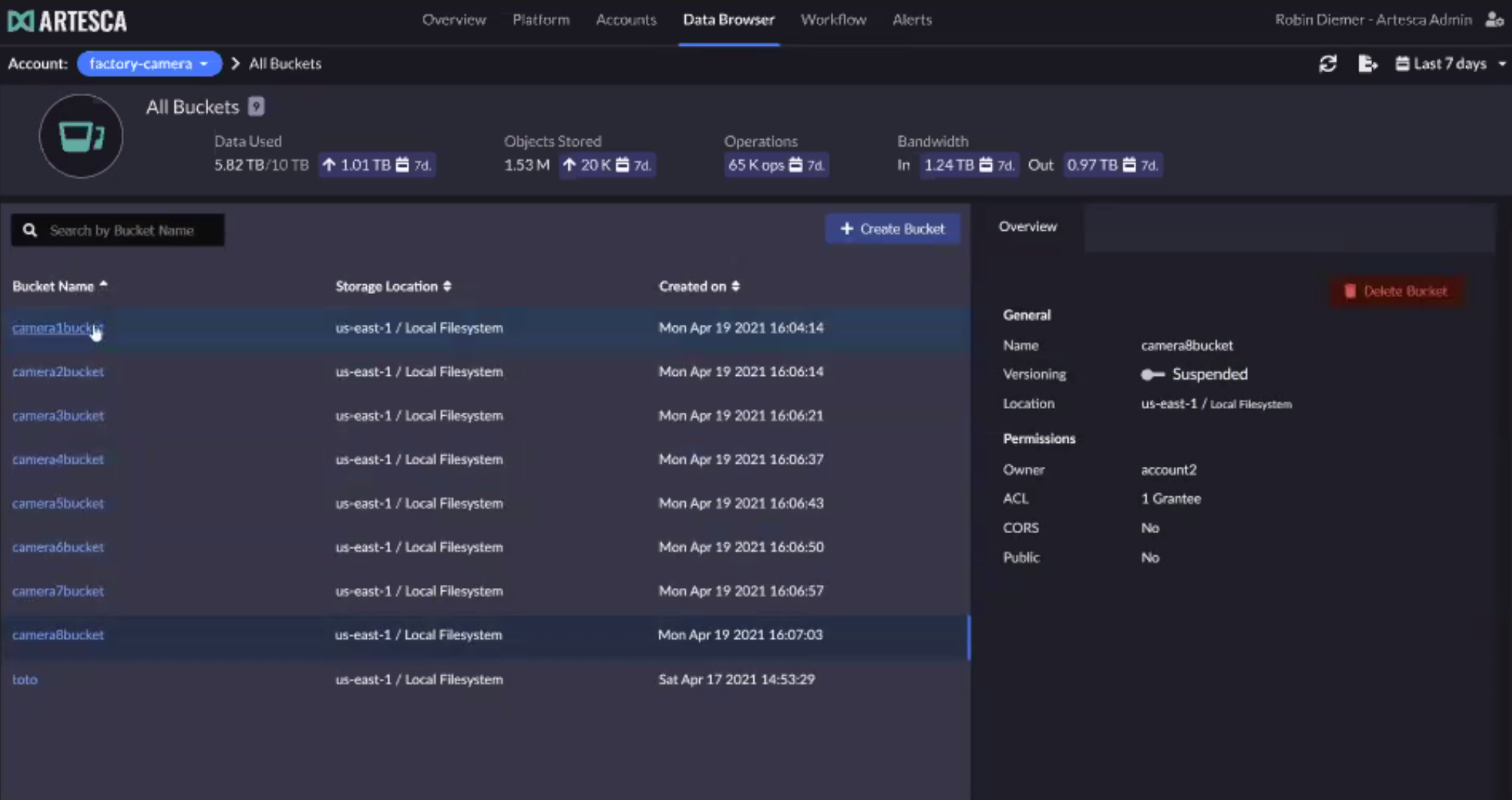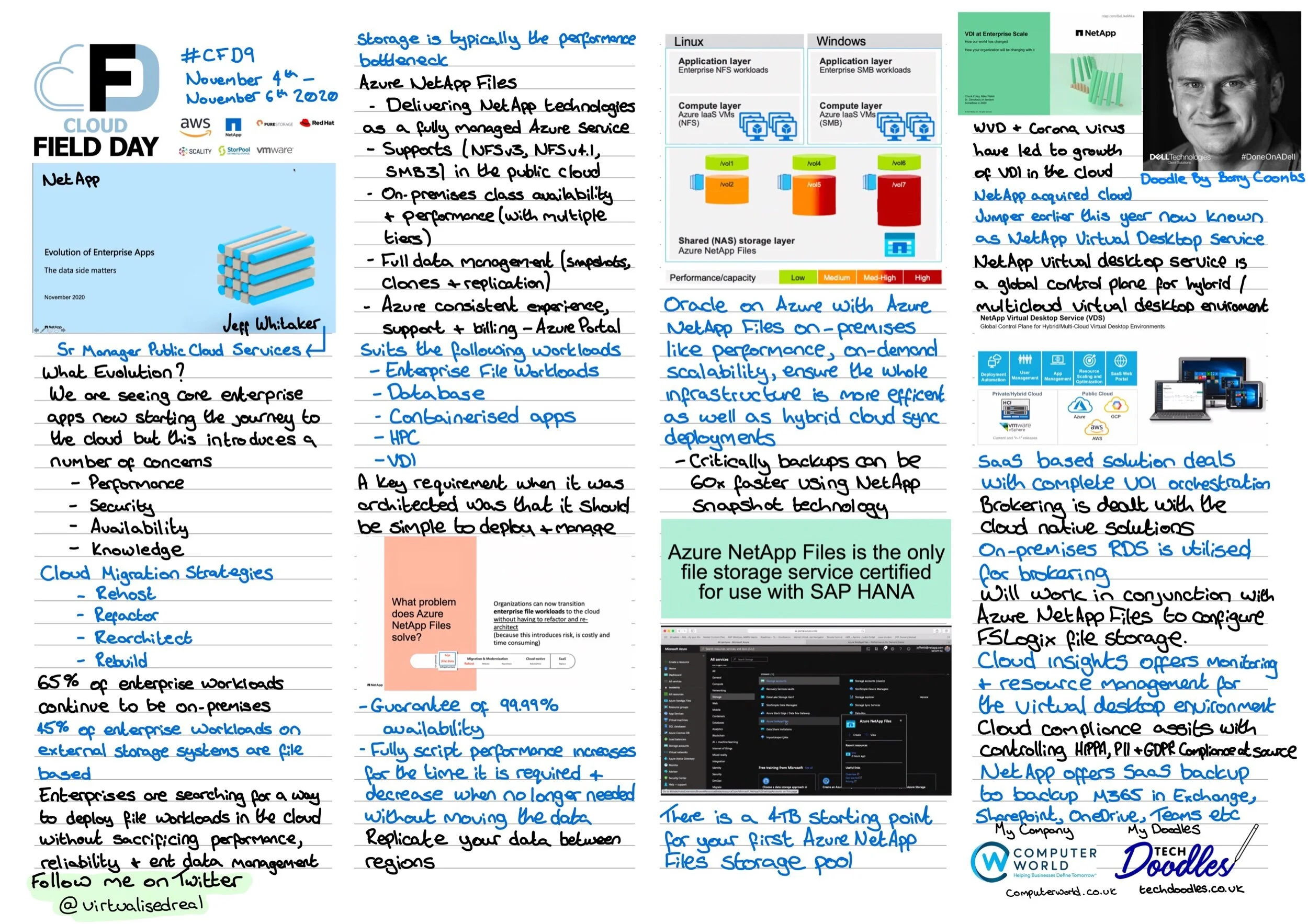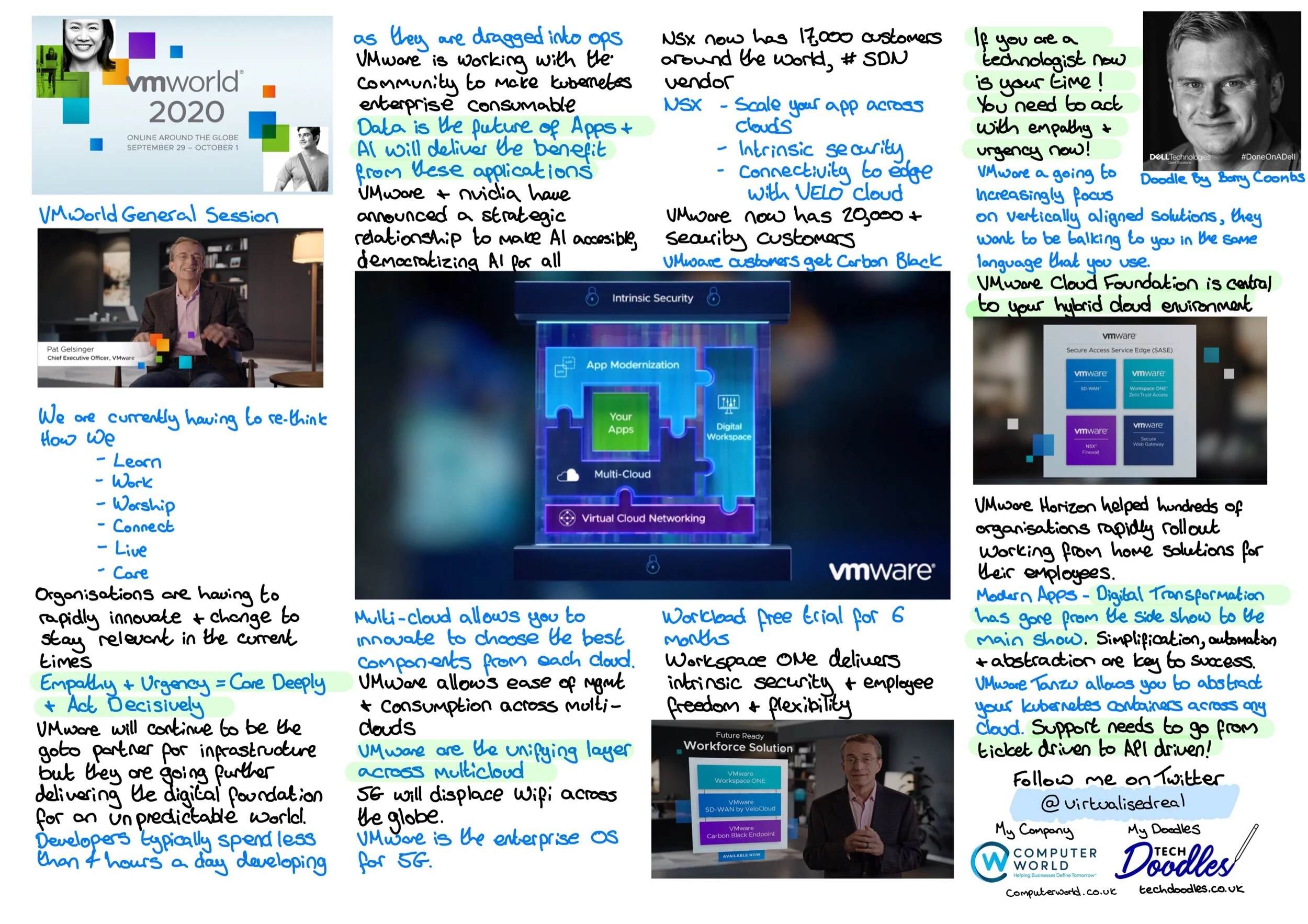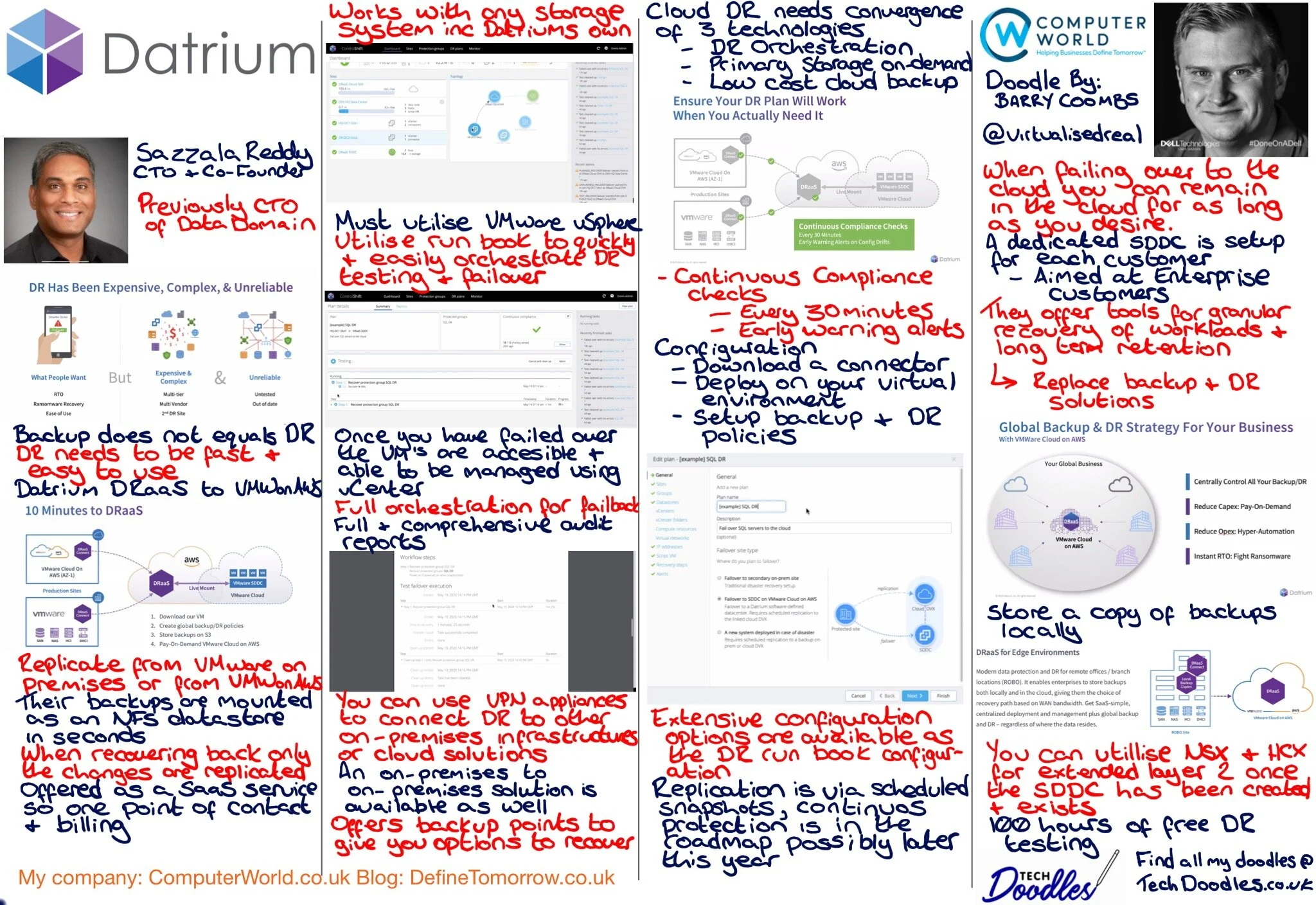You are able to see my first doodle and blog post containing information about the launch of Scality ARTESCA here.
During the second half of the Scality ARTESCA launch we switched from the ActualTechMedia webcast and came over the the Tech Field Day portion. You are able to watch the videos once available here.
The Tech Field Day session started with a discussion led by James Governor and Joey D’Antoni focusing on dev-ops and the edge. There was much discussion around kubernetes and the need for object storage as well as the need to automate processes at the edge. We then saw a demonstration by Scality of the new ARTESCA UI. The UI seemed very mature offering you the ability to not only manage ARTESCA platforms but also Scality RING and other S3 compatible repositories such as AWS and Azure Blob.
Whilst in many cases theses systems will be managed and accessed via API’s by developers and then via DevOps automations I believe certainly at the edge there is a need for a fully featured UI to allow operational troubleshooting and maintenance.
One of the elements that was pleasing to see is that the ARTESCA UI allowed for visibility and reporting of the underlying infrastructure layers including Kubernetes and the HPE hardware status. I was also very impressed by the including analytics, including predicted analytics as well as the integrated object browser where you couldn’t only browse objects but add and edit meta data.
Please see above my doodle from the second part of the Scality ARTESCA launch and below some of the UI screenshots.
You can learn more about Scality ARTESCA here >> SCALITY ARTESCA | scality
and you can see more from HPE on Scality here >> HPE Object Based Storage for Scality Solutions | HPE





















